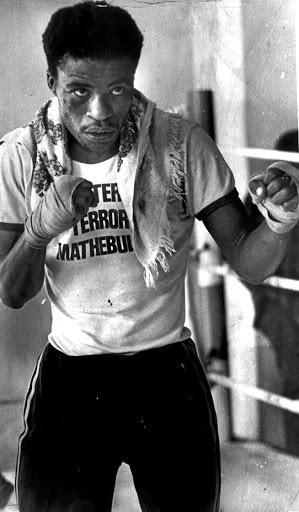Chris Hani Municipal Region, Eastern Cape
Sedgefield
Kranshoek, Western Cape
Sutherland, Northern Cape
Sutherland can be found in a relatively remote part of the country. Situated in the Northern Cape, this Karoo town is not on any major highway. It is however a little more than 100km from the N1 and merely a: “sho’t left”, at Matjiesfontein. Then simply follow the winding road into the desolate and dramatic landscapes of the Karoo, leading you up, up and up to the little town at the top. About a four-hour drive from Cape Town, Sutherland is an excellent weekend getaway for romantics, families and off-the-beaten-track travellers. Once in town, it won’t take long to orientate yourself (in fact, there is only one long tarred main road, and a few dusty side branches that seem to melt into the horizon; it would be difficult to get lost). But, as small as the town is, there are about 40 guest houses ready to welcome you, along with five restaurants and three groceries stores in the main road. Of course, you are not here only to eat and sleep – you also want to discover Sutherland.
Your first stop will most likely be: 'SALT'. The Southern African Large Telescope is the largest single-optical telescope in the southern hemisphere. The actual telescope is made up of a primary hexagonal mirror 11m wide, consisting of 91 individual hexagonal mirrors, each 1m. A day tour will share all the technical information on how the telescope works as you walk through the facility. At nightfall, enjoy some local cuisine (make sure you try some famous Karoo lamb) and then head for the stars – stargazing is a must while you are here. There is more than one option: you can go on night tours at SALT (using visitor telescopes) to view the night sky, or stay in town. (FURTHER READING FOR LINK)
Remember to dress warmly in winter as temperatures drop below zero degrees Celsius, during winter. Guests do hope for snow – Sutherland covered in a white snow blanket is a one-of-a-kind experience. And while it does snow in winter, it doesn’t do so every day – in fact, it can be quite erratic. Summers get quite warm, but are always relatively moderate. Spring brings blossoms and flowers along the roads. All seasons are amazing for stargazing, though!
Sutherland is not a young Town. In fact, its origins date back to the 1800's and the deep tracks of its History are clearly visible when exploring the Town. You can learn more about this History during your stay. A Church tour is an absolute must. You can also pass through the Louw House Museum, the house where NP van Wyk Louw was raised long before he became one of the giants of Afrikaans literature. The silence of the Karoo is probably one of the things you will remember most, as it is very quiet here. The open spaces and silence form part of the farmers’ existence. We recommend taking some time to experience this life. Visit farms, and learn about the seasonal migration of sheep, sheep shearing and farming in the Karoo. (FURTHER READING FOR LINK)
Mthatha, Eastern Cape- previously known as Umtata
Peter “Terror” Mathebula dies

On 18 January 2020, Peter “Terror” Mathebula South Africa’s first black world champion boxer died. Mathebula was born on 3 July 1952, in Transvaal (now Gauteng). A flyweight division boxer, Mathebula made his professional boxing debut on 10 July 1971 against compatriot Sydwell Mhlongo in Rabosotho Hall, Tembisa, Transvaal. On 13 December 1980, Mathebula became South Africa’s first black world champion when he dethroned South Korea’s Tae-Shik Kim in Los Angeles, California, USA.
Cederberg Wilderness Area
The Cederberg Region is only two hours from Cape Town and yet the landscape is completely different. With much wilder, warmer with a raw, dramatic beauty. Clanwilliam and Citrusdal with its towering Mountains, brilliant purple and orange sunsets, laden with the scent of orange blossoms in the Spring. Lamberts Bay and Elands Bay; with their perfect waves for surfing, offer open-air Restaurants serving only the best of our seafood and have an abundance of bird life to be spotted.
Wupperthal and Elandskloof, both Missionary Villages situated within these magnificent Mountains. They both have a wealth of History. Enjoy the beauty of the Cederberg in your own way: walk in the Mountains with not another person in sight, enjoy bouldering and climbing at Rocklands; go and discover the beautiful bird life or get your surf on; swim in the clear Mountain rock pools or marvel at the delicate Bushman rock art. Southern African rock art has been dated to be as old as 28 000 Years, with the age of the Cederberg paintings ranging from 8 000 Years to 100 or 200 Years. The paintings most commonly depict animal scenes, and it is thought that particular animals such as eland, have important symbolic religious meanings. Paintings were made by the San as part of their Religion and can thus not be interpreted literally! Humans are also commonly depicted, often in procession, hunting or out gathering food. Other types of paintings show therianthropes (half-animal half-human figures) and entoptic- (occurring or originating inside the eye) shapes, probably of important religious meaning.
Rock art sites in the Cederberg Conservancy open to the public are: Stadsaal; Truitjieskraal; Southern Arch and Vark Kloof. Or simply relax and enjoy the exhilarating peace of this unspoilt paradise. The Cederberg has an exceptional Botanical diversity, being part of the Cape Floral Kingdom of the Western Cape. This Are is among the twisted rock formations, farmers cultivate the World-famous healthy rooibos tea, found only in the Cederberg of South Africa!
https://www.cederberg.com/cederberg-member-1.php
https://www.dailymaverick.co.za/article/2021-10-13-the-curious-case-of-the-absent-dead-englishman/
https://www.instagram.com/p/Ck97m7yN-Lk/?igshid=MDJmNzVkMjY=
https://www.capetownetc.com/cape-town/15-of-the-best-places-to-see-wildflowers-in-the-western-cape/
https://www.dailymaverick.co.za/article/2024-06-13-stepping-into-the-stone-age-and-opening-a-window-onto-sas-ancient-rock-art/?utm_source=Sailthru&utm_medium=email&utm_campaign=first_thing
https://clarkesbooks.co.za/products/cederberg-rock-paintings-follow-the-san
https://openlibrary.org/books/OL776418M/Some_views_on_rock_paintings_in_the_Cederberg